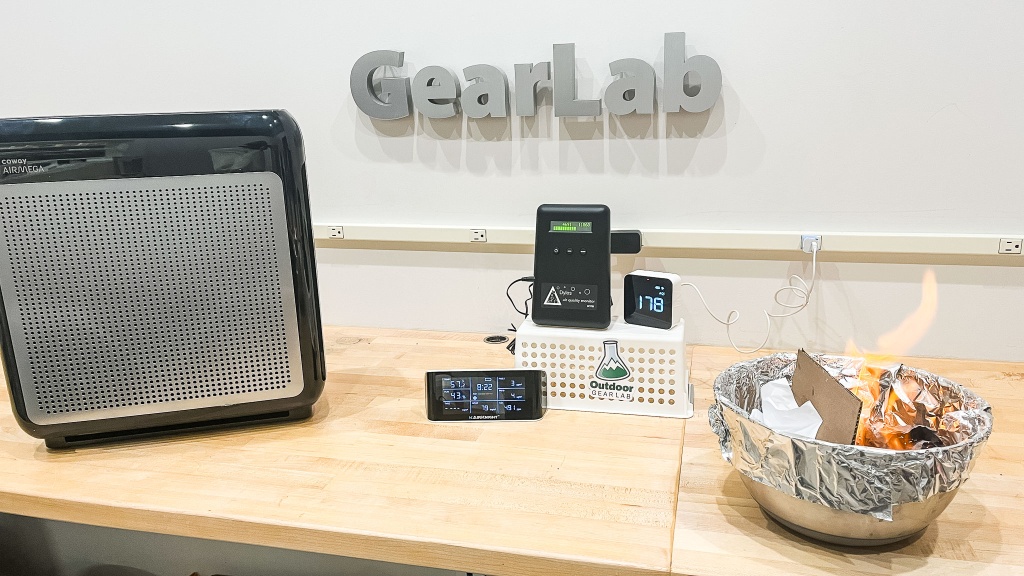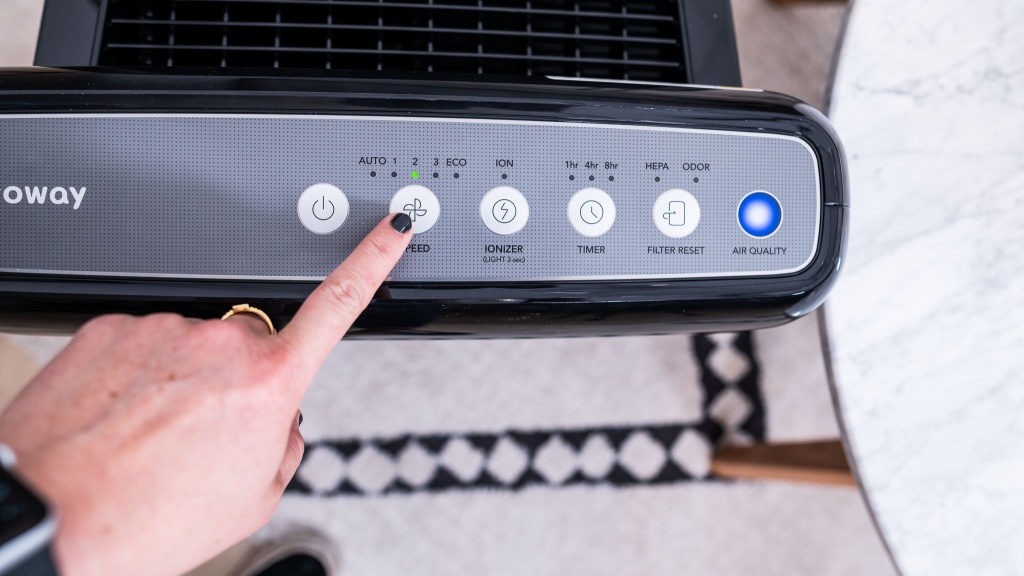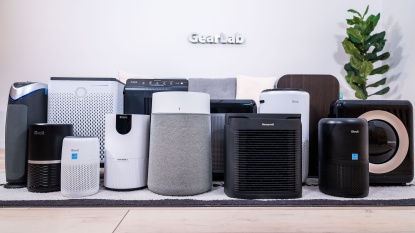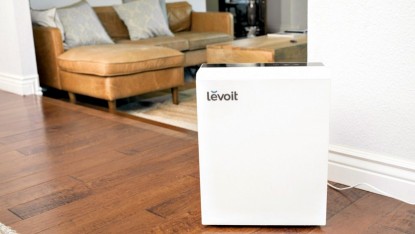Coway Airmega 200M Review
Our Verdict
Compare to Similar Products
 This Product Coway Airmega 200M | |||||
|---|---|---|---|---|---|
| Awards | Best Air Purifier for Most | Best Value for a Smart Air Purifier | Best Value for Small Rooms | ||
| Price | $230 List $187.95 at Amazon | $230 List $167.99 at Amazon | $220 List $219.99 at Amazon | $100 List Check Price at Amazon | $90 List $89.99 at Amazon |
Overall Score  |
|||||
| Star Rating | |||||
| Bottom Line | We appreciated the effective cleaning ability of this air purifier but were slightly let down by how loud it was on the highest setting | It's tough to find an air purifier that can do it all, but rest assured that this one can | This app-compatible model is user-friendly and comes with an assortment of programmable features | An affordable, high performing option that is ideal for smaller spaces | It boasts a low price and silent operation and excels in smaller room sizes |
| Rating Categories | Coway Airmega 200M | Coway Airmega 1512HH | Levoit Core 400S | Levoit Core 300 | Levoit LV-H132 |
| Air Cleaning Performance (40%) | |||||
| Noise (30%) | |||||
| Ease of Use (20%) | |||||
| Operating Cost (10%) | |||||
| Specs | Coway Airmega 200M | Coway Airmega 1512HH | Levoit Core 400S | Levoit Core 300 | Levoit LV-H132 |
| Measured Annual Cost | $96.36 | $110.16 | $148.14 | $96.81 | $84.79 |
| Airborne Particulate Reduction After 1 Hour (%) | 100.00% | 100.00% | 100.00% | 99.92% | 95.30% |
| CADR | 233 (Smoke) 246 (Dust) 240 (Pollen) |
234 (Smoke) 248 (Dust) 232 (Pollen) |
Sleep: 59 Speed 1: 88 Speed 2: 118 Speed 3: 177 Speed 4: 260 *Per Levoit, their stated CADR ratings for this product are the same for Smoke, Dust, and Pollen but differ for fan speeds |
141 (Smoke) 140 (Dust) 145 (Pollen) |
40 (Smoke) 40 (Dust) 40 (Pollen) |
| Measured Dimensions | 9.6" x 16.8" x 18.3" | 9.6" x 16.8" x 18.3" | 10.8" x 10.8" x 20.5" | 8.7" x 8.7" x 14.2" | 7.9" x 7.9" x 12.6" |
| Measured Weight | 12.7 lbs | 13.1 lbs | 10.4 Ibs | 7.3 Ibs | 5.4 Ibs |
| Measured Cord Length | 6' 5" | 6' 6" | 6' 3" | 6' 3" | 5' 10" |
| True HEPA (99.97%) | Yes | Yes | No | No | Yes |
| Estimated Lifetime Cost (5 years) | $481.81 | $550.81 | $740.70 | $484.03 | $423.93 |
| App Control | No | No | Yes | No | No |
| Air Quality Sensor | Yes | Yes | Yes | No | No |
| Measured Decibels | 59.5 | 55.9 | 51.8 | 52.3 | 46.1 |
| Energy Star Certified | Not Listed | Yes | Yes | Yes | Not Listed |
| Listed Coverage | 1,748 sq. ft | 1,748 sq. ft | 1560 sq. ft | 219 sq. ft | 129 sq. ft |
Our Analysis and Test Results
We enjoyed accessing the functionality of the Coway Airmega 200M thanks to the friendly user interface. It cleans the air really well, too. If you're in need of a no-frills, straightforward device, this could be it.
Performance Comparison
Air Cleaning Performance
The first thing we looked at when rating each machine was to check their respective CADR (clean air delivery rate). The Airmega 200M has a CADR of 246 cubic feet per minute for dust, 240 for pollen, and 233 for smoke. While not the highest, it ranks pretty far up the list in terms of CADR number, making this a good choice for medium to large spaces.
During our smoke test, after checking the Dylos Air Quality Meter reading, we observed that the Coway Airmega 200M managed to clear out 100% of the harmful large particles from the air within the given hour. The room was noticeably clear of smoke, but the bad smells lingered even after 60 minutes. We would have liked to see a better result for odor elimination, but apart from that, it did a good job here.
Noise
To take the bias out of what we thought was a noisy machine, we measured the actual sound output of each model with a decibel reader. The Airmega 200M is one of the loudest of any of the other machines we tested. When set to high, it emits a noise that measures up to 59.5 decibels, which we found to be distracting and somewhat annoying. When set to medium, the noise is reduced significantly, only producing 40 decibels, which was in line with most other models. When set to low, it produced 10 decibels, which is virtually silent.
Ease of Use
The Airmega 200M was simple to set up. You'll need to replace the HEPA-grade filter once a year and the deodorizer filter every six months to keep the air quality optimal, which is fairly standard. But, you'll need to clean the pre-filter every 2-4 weeks, depending on how dirty it gets.
The user interface is straightforward to use. This unit is equipped with an air quality monitor and a large range of settings, which includes an automatic mode based on the room's air quality. It weighs in at just over 12 pounds; it's a little heavy, but its built-in handles make it easy to move it around should you need to.
Operating Cost
To estimate the annual operating costs of each model, we hooked them up to a watt meter and determined how many kilowatts per hour they utilized. The Airmega 200M is pretty energy efficient, only using .01 kilowatts per two hours of use. Assuming 12 hours of daily use, that's 21.9 kilowatts per year. Multiplied by the national average cost of electricity, your yearly electric bill to run this model is around $3.01.
The Airmega 200M filter should last you about a year. When you factor in the original purchase price, energy consumption, and the cost of replacing filters, this air purifier has one of the best annual costs at just $96 per year. For comparison, some of the most expensive air purifiers we tested cost up to $270 per year.
Should You Buy the Coway Airmega 200M?
The Coway Airmega is relatively inexpensive to maintain and keep running, and does a fairly good job of clearing the air of particulates. Other than the loudness of the high setting and a few nit-picks, this is a solid device. On the other hand, it doesn't do much to stand out from its peers. We can't fully recommend it above others we've tested unless the aspects mentioned above appeal to you, and you don't need smart functionality.
What Other Air Purifiers Should You Consider?
We think the Coway Airmega 400S is a great choice. It is considerably more expensive to purchase and operate, but it also has a much larger coverage area. If you want something with slightly better purifying ability and don't need the extended coverage of a larger model, the Blueair 311i Max should be a contender. It will cost a little more to run on a yearly basis, though.












